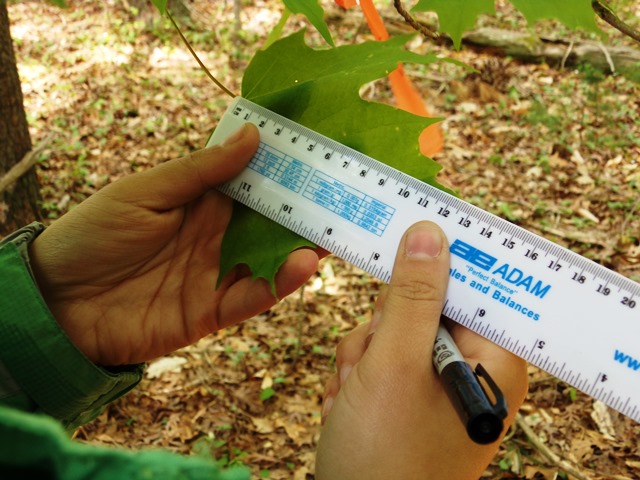So, maybe we’re reaching here, but numbers are numbers, right?
Last year when we did our leaf measurement survey (measuring leaves early and late in the growing season, capturing rate of change, perhaps over the long haul telling the story of global climate change) we found that the average American beech tree leaf was 57 mm wide and 122 mm long. This year, it was 64 mm by 131 mm. Our red maple showed similar size increase: 116 mm in width by 99 mm in length in 2014, 124 mm by 101 mm.
Why the jump?
2014 was one of the sunniest summers on record for eastern Massachusetts, dating back to the beautiful season on 1971. It was followed by one of the snowiest winters on record. And there lies, at least, one explanation. Snow contains nitrogen which gets released into the food chain in the soil. The trees in our region got a huge burst of nitrogen in April as the snow melted (here at the Science Center the last snow disappeared around April 22) and therefore got a running start for the growing season.
What does that mean for us? It means it’s time to get the pain-relieving cremes ready. Each leaf (from our study, anyway), is about 3-5% bigger than it was last year, which doesn’t mean much individually, but when multiplied by the thousands of leaves you will rake this fall, means you will have what we call “rake ache,” right up underneath the shoulder blades.
And then the snow will fall…
